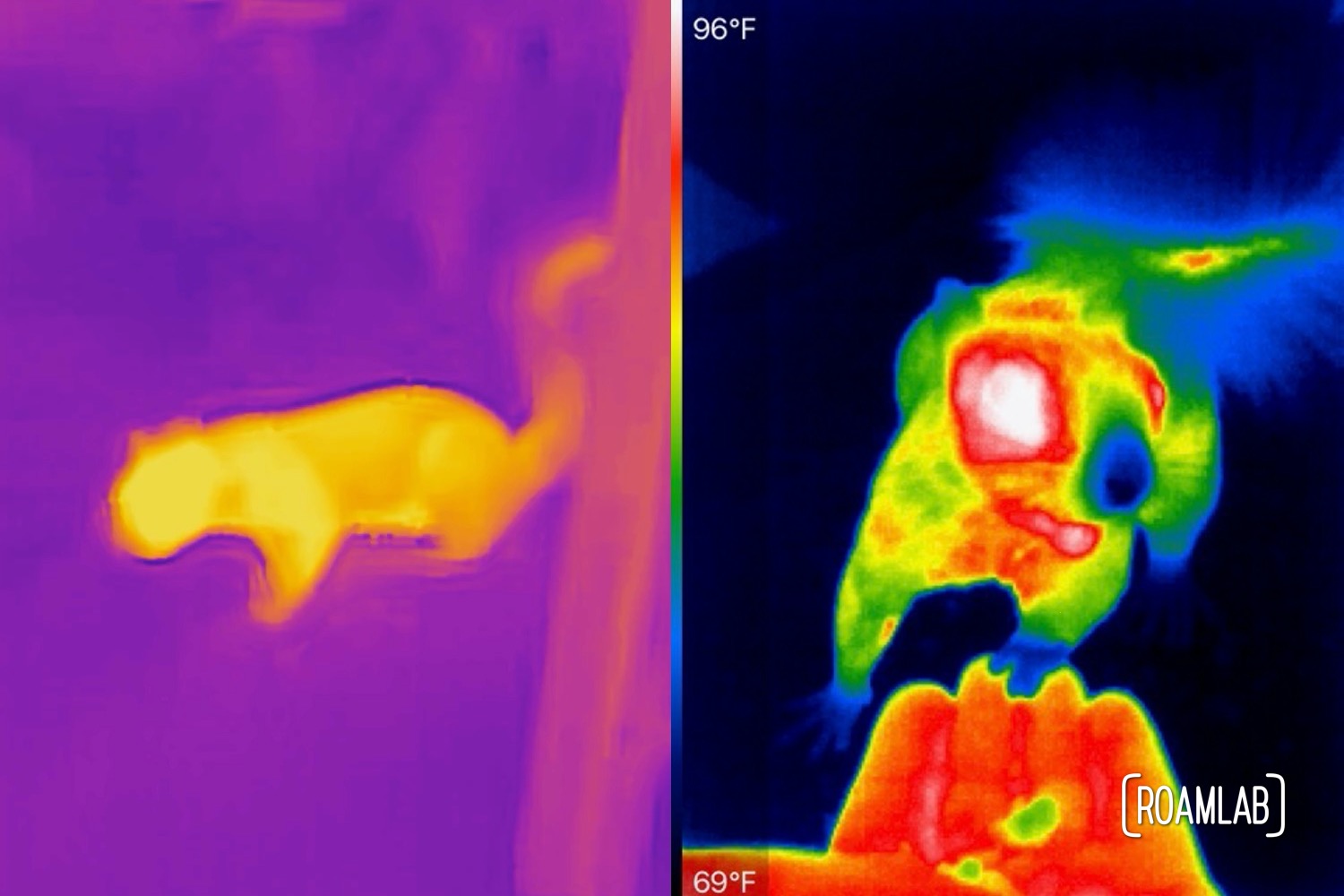
FLIR One Pro vs. Seek Thermal Compact PRO iPhone Thermal Camera Review
We are Roam Lab. The “Lab” part of our name reflects our aspiration to test and experiment with many aspects of our camper build. One of the most important decisions we have made was to follow the original design of our 1970 Avion truck camper in the use of closed-cell spray foam to insulate the interior. But without a way to objectively measure the real-world effectiveness, we can only guess how well it works. To this end, we invest in a thermal camera. Well, we invest in two thermal cameras. And the story of how we come to this and how we proceed can be pretty revealing to anyone interested in buying a thermal camera for themself.

How We Wound Up With A FLIR One Pro and a Seek Thermal Compact Pro
When we first decide to invest in a thermal camera, we immediately gravitate to the FLIR One Pro camera. It plugs into a smartphone and works in conjunction with an app to take and process thermal images. While I prefer standalone tools, this smartphone plugin means we can have the functionality of a thermal camera while not having to pay for a separate screen. Better yet, the camera can easily tie into native features such as the phone photo album and use the phone’s processing power to render images rather than having to build unique hardware.
But we immediately encounter a problem: FLIR automatically stamps watermarks on all their images. My iPhone and Canon camera do not watermark my pictures. For the price we were paying for the camera, we shouldn’t have to double as an advertisement for our tool. Unfortunately, there is no setting to remove the watermark.
Resigned, we start looking for an alternative. Seek is the head-on competition for FLIR. They produce a similarly priced “pro” model thermal camera for cell phones. While they do watermark their pictures by default, it is a setting that can be easily disabled in the app. To us, it’s a no-brainer: the Seek model has similar features and price as the FLIR without the watermark. So we order the new camera. But when we get it, we discover that choosing which camera to return is far more complicated than we initially thought.
After using both cameras, there are features that we like and dislike about each. Our general approach is to keep researching until the answer is clear. It turns out that neither camera is the clear winner. So we’ll walk through the features that stand out to us. Because, in the end, the “best camera” comes down to a matter of what features we value the most.
Hardware
While the FLIR One Pro and the Seek Thermal CompactPRO target the same consumer niche with the same price point and similar marketing, their hardware is surprisingly different.
Sensor Resolution
Sensor resolution is one of the most important variables for a camera. The sensor resolution defines how much data a sensor captures in a single image. For example, our Canon camera has a 26.2 Megapixel Full-frame CMOS sensor.
We are used to far more detail in our cell phone pictures than what we will get with off-the-shelf iPhone thermal cameras. Similarly high-resolution thermal imaging requires a budget of military proportions. The FLIR camera’s thermal sensor is only 160×120 pixels. In comparison, the Seek thermal sensor is double FLIR’s at 320×240. So, while still small, the Seek sensor is a standout winner.
Winner: Seek
| FLIR ONE Pro | Seek CompactPRO | |
|---|---|---|
| Sensor Resolution | 160 x 120 | 320 x 240 |


Temperature Sensor Range
The whole point of these thermal cameras is to capture the temperature range within a given view. Of course, every sensor has its limits. Surprisingly, both of these cameras have very similar temperature ranges. The FLIR ONE Pro detects temperatures between -4°F and 752°F. The Seek CompactPRO can detect cooler temperatures, down to -40°F, but only reaches a max temperature of 626°F. Which one is better, then, comes down to our application. Do we need more specificity around cold temperatures or scorching temperatures? Either extreme is not relevant to our needs, so we’ll give the nod to FLIR’s slightly more extensive range but also note that the distinction means little to us.
Winner: FLIR
| FLIR ONE Pro | Seek CompactPRO | |
|---|---|---|
| Temperature Sensor Range | -4°F to 752°F | -40°F to 626°F |
Field of View
Different lenses allow for a variety of fields of view. At its extreme, a fish-eye lens allows a very wide field of view but at the cost of distorting the image. Straight lines are curved, and objects in the center of the lense are much narrower than they appear. Because of this distortion, it is preferable to achieve the same coverage by shooting with a narrow viewing angle from a greater distance. This method can roughly capture the same subject matter but without the warping. Since our camper is a small, enclosed space, the constraints mean that any photograph we want to take will either cover a limited portion of the interior or capture a distorted perspective with a wide viewing angle.
In this case, we have a choice because both cameras have dramatically different fields of view. The FLIR camera optimizes for narrow spaces with a 55° wide-angle view while Seek prioritized fidelity with a smaller 32° viewing angle. Both approaches have their upsides. The “better” field of view comes down to the subject, not the camera. In our case, the broader field of view is a decided benefit for us, making FLIR our preference.
Winner: FLIR
| FLIR ONE Pro | Seek CompactPRO | |
|---|---|---|
| Field of View | 55° | 32° |


Power Source
Both the FLIR and Seek cameras are battery-powered, but the location of each battery varies. The FLIR camera has its own internal battery. This is handy because it will not drain the phone battery. As a downside, it must have its own charge in order to work in conjunction with a phone. The FLIR camera takes about one hour to charge and has a battery life of only 45 minutes. If either the phone or camera is out of charge, we cannot take thermal images. So, along with charging our phones, computers, camera batteries, drone batteries, etc, we would also have to keep the FLIR batteries charged. This can be inconvenient for a product that we may want to use intermittently and possibly with little notice. The FLIR’s independent battery is also a concern because once the life span for the battery ends it cannot easily be replaced.
In comparison, the Seek camera powers itself through the phone. As long as the phone has power, so does the camera. With the Seek camera’s relatively low power demands, it can operate on a charged iPhone battery for longer than the FLIR’s 45-minute maximum. Powering from the iPhone makes for a more simple system but it also means that the camera is draining one of our most precious resources: phone battery.
For a power user, who knows they will be using the camera a lot and on a regular schedule, having to power, the FLIR can probably fit into their daily schedule relatively seamlessly. But for a casual user, or one, like us, used to having to travel with backup power packs for our phones, it is preferable only to have to worry about backup solutions for one battery.
Winner: Seek
| FLIR ONE Pro | Seek CompactPRO | |
|---|---|---|
| Power Source | Internal | iPhone |

Video Frame Rate
Both the FLIR and Seek thermal cameras support video capture, but the frame rate is significantly different. We measure the frame rate as frames per second, or hertz (Hz). Generally, the human eye can process 10 to 12 images per second (10-12 Hz) as individual images. The eye perceives anything higher as motion. The Seek CompactPRO only achieves about 15 Hz. But at least that is past the threshold to be viewed as motion, which is not attained by FLIR’s 8.7 Hz frame rate.
This low frame rate is partially understandable: FLIR relies heavily on image processing—using an optical camera to enrich the thermal images. But this results in a problem not only for viewing the video but producing it. There is a slight lag between what is happening and what is appearing on the screen. So a subject—say, an adorable little squirrel—could have wandered out of the shot before it registers on the screen. Both in production and viewing, there is a clear winner for the video feature.
Winner: Seek
| FLIR ONE Pro | Seek CompactPRO | |
|---|---|---|
| Video Frame Rate | 8.7 Hz | >15 Hz |
Camera Body Dimensions
The comparative size of the FLIR ONE Pro and Seek CompactPRO is a surprise. We assumed—given each camera is performing the same role at a similar price—the FLIR and Seek would be relatively identical sizes. On the contrary, the FLIR camera is 2.7 x 1.3 x 0.6 inches—about the width and thickness of a standard iPhone sticking out an extra inch below. The Seek is almost a quarter the size of the FLIR at 1.75 x 0.8 x 1 inch. Not only does it take up less room, but the Seek is small enough that we don’t have the same worries around bumping and damaging the Seek as we do with the FLIR when it is on our phone.
Winner: Seek
| FLIR ONE Pro | Seek CompactPRO | |
|---|---|---|
| Camera Body Dimensions | 2.7 x 1.3 x 0.6 in | 1.75 x 0.8 x 1 in |


The Optical Camera
As useful as the thermal camera is, it is often helpful to have a standard visual light photograph to orient to the thermal picture. That way, we can easily toggle between the thermal image and the visible light image to identify where the hot spots are. The FLIR camera has two cameras: a thermal camera and a visible light camera installed side-by-side. While it is a very low-quality image, the camera means we have two images from almost the same perspective. Not only does this allow for comparison, but the visible light camera provides for more accurate image processing of the thermal view. But we’ll cover that in the image processing section.
The Seek camera only includes a single thermal sensor in the body. This sensor can still work in conjunction with the phone’s native camera, but there is a parallax effect. The thermal camera is at the bottom of the phone, and the visible light camera is at the top of the phone. So the images are shot from sufficiently different angles that at shorter distances they are not always aligned.
Winner: FLIR
| FLIR ONE Pro | Seek CompactPRO | |
|---|---|---|
| Visual Light Camera | Internal | iPhone |



Overall Hardware Winner: Seek
Image Quality
What matters most is the quality of the final image. For all the hardware issues, which camera makes the best picture? Where Seek seems to have the superior hardware, FLIR makes up ground in their software, creating surprisingly high-quality images. Even so, the question of image quality comes with its qualifications.
Image Resolution
We already discussed the resolution of the camera sensor. But, between creative software enhancements and superimposed images, the question of the final image resolution is a bit more nuanced than just the sensor resolution. While Seek’s relatively large thermal sensor ensures a more substantial final image (960 x 720 pixels), FLIR does partially make up for its smaller sensor by taking data from the companion optical camera to result in a 640 x 480-pixel image.
Even so, the difference between these dimensions is significant. As a point of comparison, the maximum width of this blog post is 960 pixels. So one of these cameras can produce a single image at a fidelity that can span a blog page while the other cannot. Sizing an image to a blog’s dimensions is a particular use case. But a larger image broadens our options across the board.
Winner: Seek
| FLIR ONE Pro | Seek CompactPRO | |
|---|---|---|
| Image Resolution | 640 x 480 | 960 x 720 |


Aspect Ratio
The aspect ratio defines the height relative to the width of an image. For example, a 1:1 aspect ratio would be a square. In the case of the FLIR and Seek cameras, both automatically default to a 4:3 aspect ratio. This aspect ratio was standard for vacuum tube era televisions and still seen occasionally in applications like Instagram, where boxy images are preferred. But like the advent of HDTV, widescreen monitors, and our smartphone screens, the more conventional aspect ratio is now 16:9.
FLIR only supports the 4:3 aspect ratio. Fortunately, Seek is not quite as limited: we can choose between 4:3 or 16:9 aspect ratio. We would have liked a few more choices, ideally 3:2 like an SLR camera. At the very least, 16:9 is an aspect ratio that can be shared on Youtube without awkward white bars filling the negative space.
Winner: Seek
| FLIR ONE Pro | Seek CompactPRO | |
|---|---|---|
| Aspect Ratio | 3:4 | 4:3 | 16:9 |


Watermarks
When the primary function of a device is to render a visual representation of heat, it’s ridiculous to obscure the image with a watermark. (That’s for the photographer, to do) Plenty of free apps will add their watermark to content that we create using their service. But there is some implicit quid pro quo when using a free service to give them a little promotion in return. But we paid for this camera, and it was not cheap. That should be the end of my exchange with FLIR.
The watermark issue seems to be something we only see addressed on a few forums and review comments on Amazon. We don’t see the watermark in the sales images for the FLIR One Pro and there is no mention of a watermark in any product description.
In response to complaints about the watermark in the Amazon review section for the FLIR One Pro, a FLIR technical support representative explained that there is no way to remove the watermark due to “core branding specifications.”

If FLIR was willing to disable the watermark, they could easily update the app to exclude the watermark. It isn’t as if the watermark appears in all image views. Editing modes exclude the watermark. And the FLIR tools app removes the semi-transparent FLIR watermark in the upper left-hand corner but only to replace it with an opaque white watermark on the lower left-hand corner!
There are some workarounds for the watermark. Editing tools can obscure the watermark, but the manual effort is tedious and not a scalable solution. We can crop out the watermark but the image is already small and cropping would remove a significant portion.
It should be noted that the Seek Compact PRO also appends a watermark by default, however it can be easily removed through the app.
Winner: Seek
| FLIR ONE Pro | Seek CompactPRO | |
|---|---|---|
| Watermark | Not Removable | Removable |


Image Processing
While hardware is an essential foundation for a thermal camera, image processing is what transforms a collection of data into a visually meaningful scene. While both cameras have customizable color palettes, the FLIR has the ability to enhance the thermal image with data from a photographic image.
Image Color
FLIR images are certainly prettier. The default color pallet is more eye-catching with rich tones of gold and purple, as opposed to Seek’s more basic rainbow palette. Both apps support different color palettes that come very close to each other and manual control over the color thresholds to focus on different temperature ranges. All the same, Seek’s color pallet just isn’t quite as arresting. For those with an artistic eye, FLIR wins this round.
Winner: FLIR
Photo Overlay
Here is where FLIR makes up ground. Seek may have higher resolution imaging, but FLIR uses the additional optical camera to blend the visual and thermal images. This way, the software can increase detail in the image and recognize the relationship between a heat signature and the related visual feature. FLIR has branded this MSX enhanced image processing, and it positively contributes to a smoother overall picture. However, in cases of night photography, such as spotting a wild animal, we have to rely on the thermal sensor alone.
Winner: FLIR
| FLIR ONE Pro | Seek CompactPRO | |
|---|---|---|
| Image Software | MSX | – |




Overall Image Quality Winner: FLIR…I think?
Usability
These cameras are only as valuable as they are usable. Say what we will about hardware and image processing, we can only get the image after we connect and operate the camera. Unfortunately, this is not quite as straight-forward as we might hope.
Connectivity
Since smartphone applications control the cameras, they are effectively bricks when unconnected. Both cameras directly plug into the iPhone through Apple’s lightning connector. That means the cameras we are using only work with iPhones. FLIR and Seek models are also available with USB3 connectors to pair with Android phones.
The upside of this hardware connection should be that the cameras and their respective applications work in perfect concert together. After all, we don’t have to worry about interrupted Bluetooth or wifi connections. Unfortunately, we are not so lucky. The FLIR One app opens with a prompt to connect the camera to use the app. If the camera is already connected before we launch the app, the app can’t seem to pair with the camera. In our tests, we have had to unplug and replug the camera to establish a connection.
Part of the FLIR One’s troublesome connection may relate to how long the camera takes to establish communication with the app. It takes 15-seconds (give or take a little). That’s compared to the two seconds it takes to pair the Seek CompactPRO with the Seek Thermal application. Those extra thirteen seconds have cost us some wildlife shots.
As if this is not enough frustration, the FLIR camera tends to drop its connection. This lost connection happens most often after a period of inactivity, which requires reestablishing the connection by disconnecting and reconnecting the camera. But this has also occurred in the middle of actively shooting video. Did you notice that the Seek demo video was one minute and twenty-seven seconds while the FLIR video was only twenty-three seconds? We’ve been trying to shoot a couple of video clips for side-by-side comparisons between the cameras but gave up after too many dropped connections with the FLIR.
On the other hand, the Seek CompactPRO has maintained a seamless connection. When we plug in the camera, it triggers an alert asking to open the Seek Thermal application. Two seconds later, we are ready to start taking pictures.
Winner: Seek
| FLIR ONE Pro | Seek CompactPRO | |
|---|---|---|
| Connectivity | Unreliable | Reliable |
Smart Phone Applications
Both cameras are controlled by their respective applications. In FLIR’s case, that’s actually two applications: FLIR One to control the camera and FLIR Tools to edit the images afterward. Meanwhile, the Seek is controlled with the Seek Thermal app.
To be honest, both FLIR and Seek apps are sub-par. Misleading icons on the FLIR app make finding what we want an extended hunt. For example, a symbol in FLIR Tools depicting a series of toggle switches would usually indicate a “settings” dialog. Despite this, the button launches an information panel—better summarized as an “i” icon. Yet, for all my frustration with the FLIR app, the Seek app isn’t any better. Some features are easier to find. Some are more difficult. But, on top of it all, the Seek app has a nasty habit of closing itself when I try to manage specific settings. Fortunately, this isn’t related to core features, so the app is buggy but usable.
It’s hard to pick a favorite when both are so subpar, but FLIR is a little more robust and has a few more editing controls…if we can find them.
Winner: FLIR (but only by a hair)



Overall Usability Winner: Seek
Performance Overview Table
| FLIR ONE Pro | Seek CompactPRO | |
|---|---|---|
| Sensor Resolution | 160 x 120 | 320 x 240 |
| Temperature Sensor Range | -4°F to 752°F | -40°F to 626°F |
| Field of View | 55° | 32° |
| Power Source | Internal | iPhone |
| Video Frame Rate | 8.7 Hz | >15 Hz |
| Camera Body Dimensions | 2.7 x 1.3 x 0.6 in | 1.75 x 0.8 x 1 in |
| Visual Light Camera | Internal | iPhone |
| Image Resolution | 640 x 480 | 960 x 720 |
| Aspect Ratio | 3:4 | 4:3 | 16:9 |
| Watermark | Not Removable | Removable |
| Image Software | MSX | – |
| Connectivity | Unreliable | Reliable |
Conclusion
Frankly, if the cameras were cheaper, I’d just hold on to both and draw out the decision. But $400 bucks was hard enough to shell out once, let alone twice. So one had to go.
Picking between these two cameras is surprisingly tricky. There are some times we prioritize FLIR’s image quality. And yet other days we want the Seek’s image fidelity. The decision comes down to deciding what features matter the most to us. While this certainly can vary by use case, we find the reliable connection between the Seek camera with its app and the ability to remove the watermark are deciding factors. Close behind are the Seek camera’s smaller form factor and use of the phone battery.
It’s also worth noting that the features I prefer with the FLIR are generally software features. Hopefully, that’s something that can be relatively easy for the Seek to improve. So, I’ve decided to keep the Seek for its superior hardware.
Look forward to future posts exploring heat transfer and maybe a little wildlife fun.


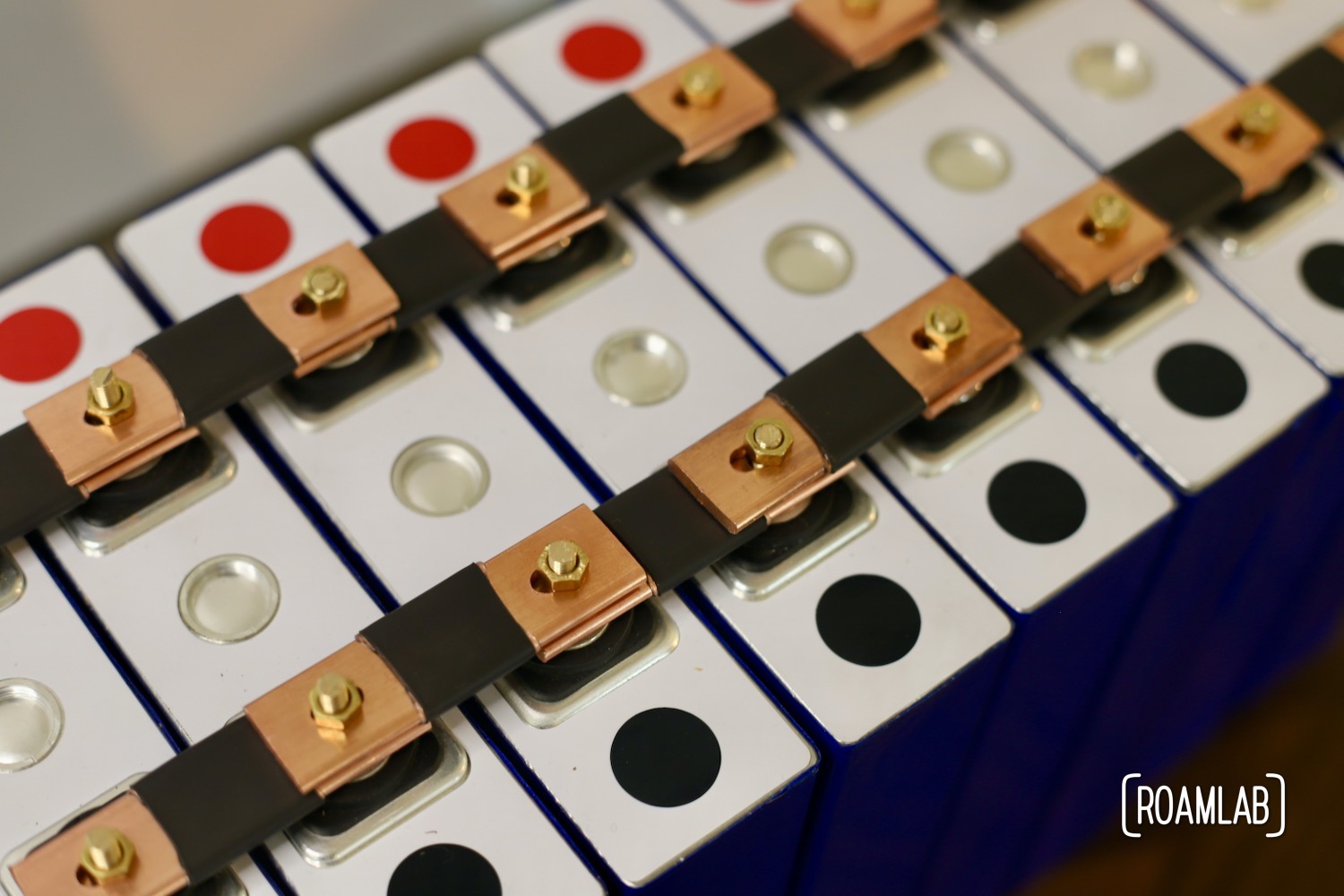
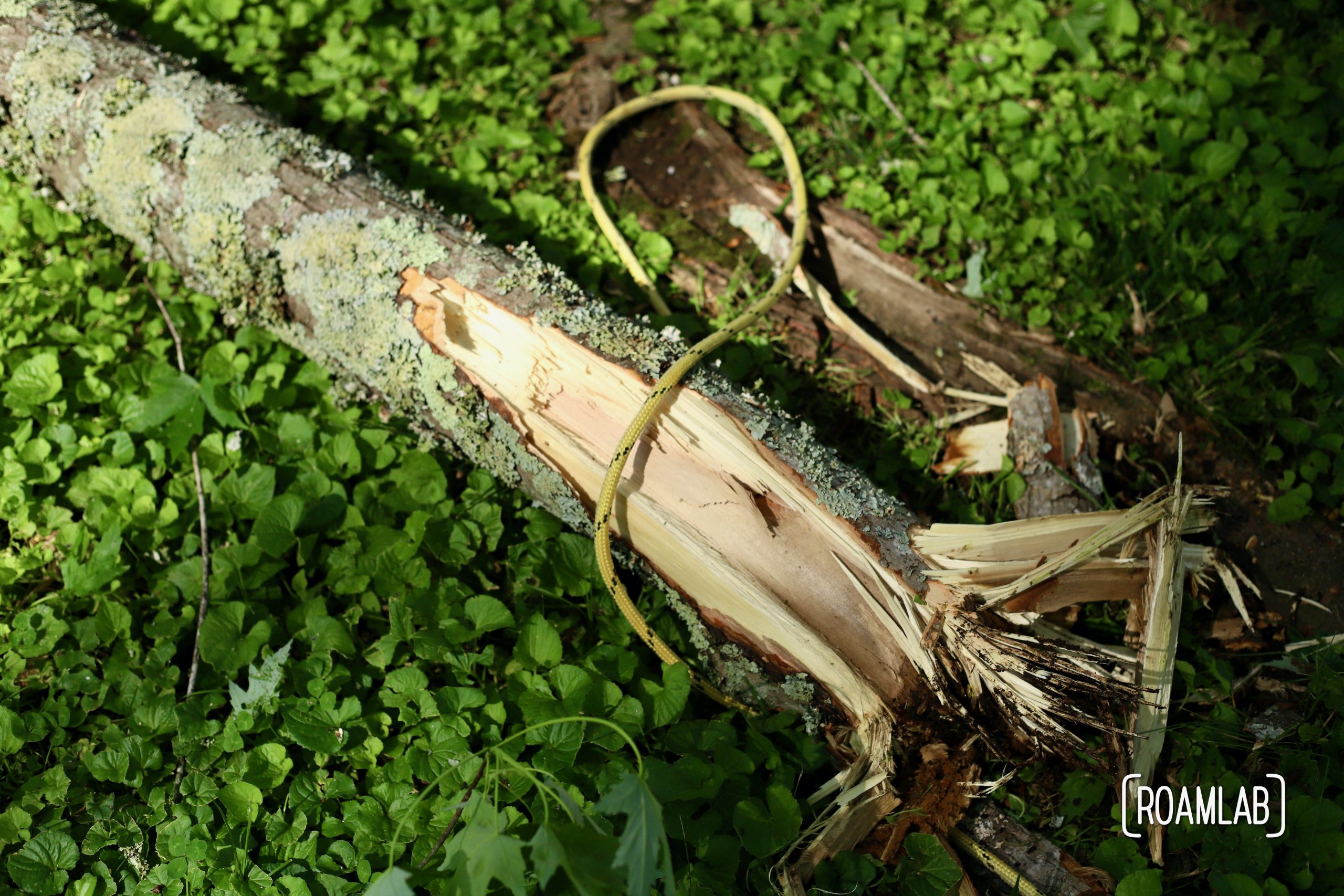
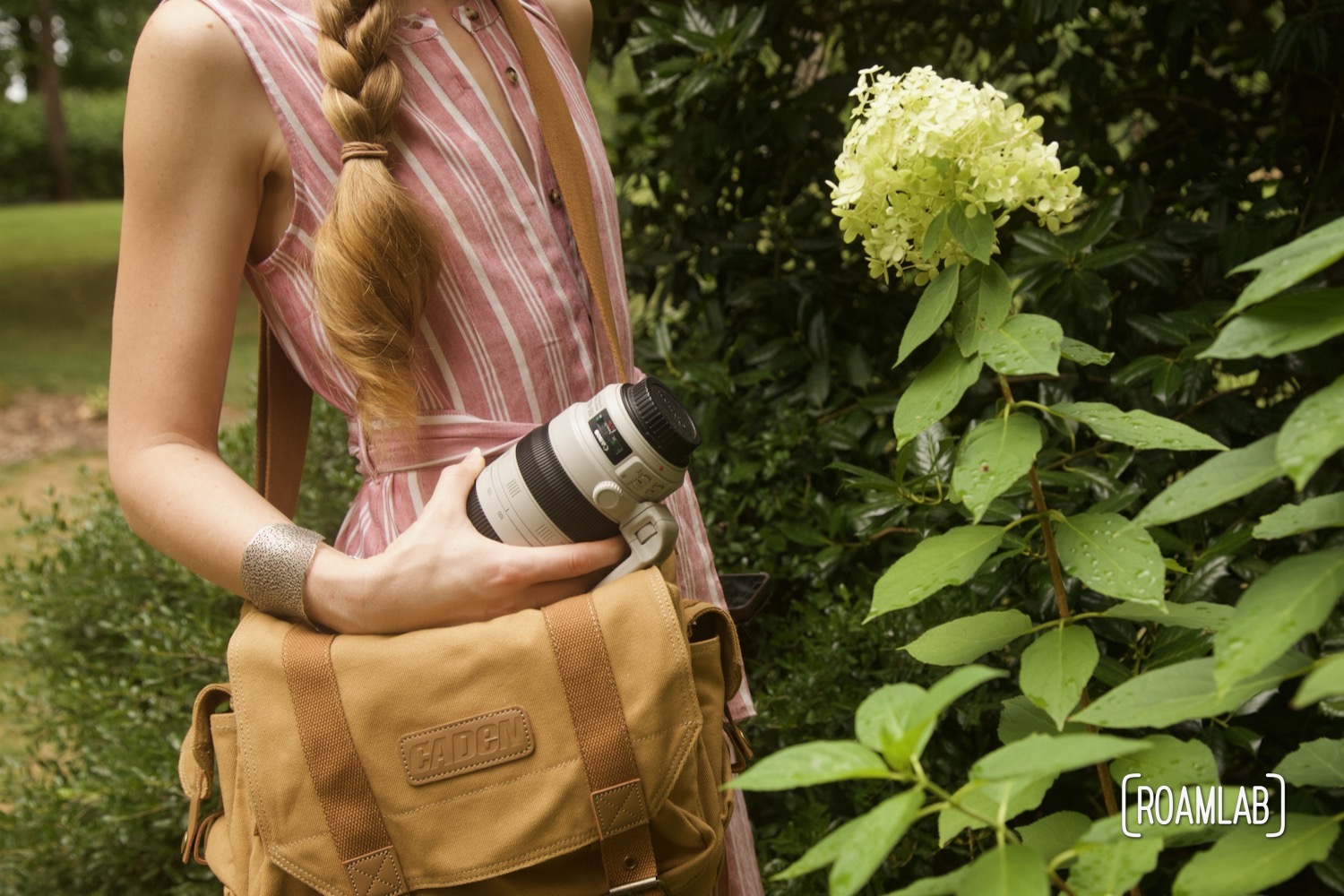
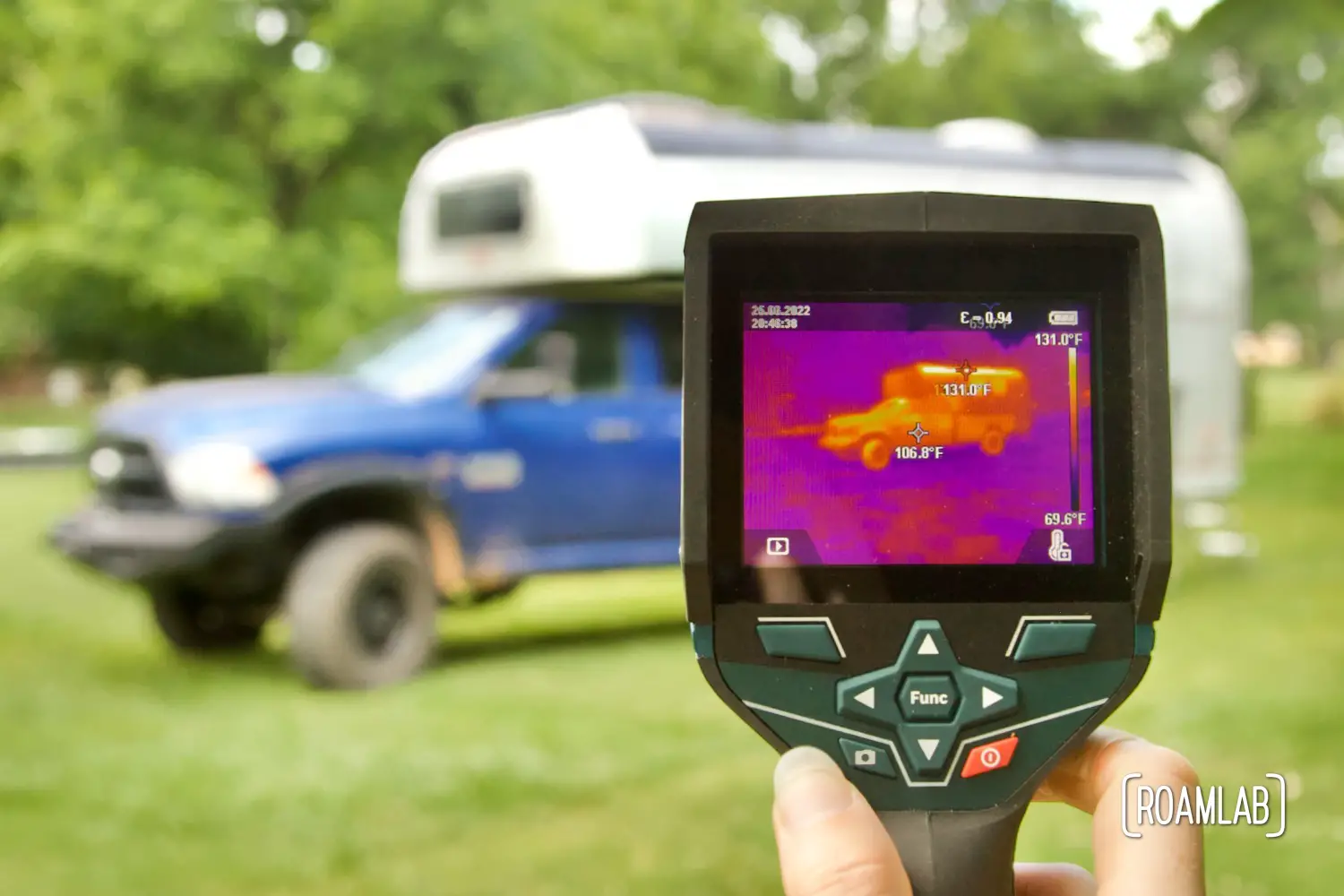
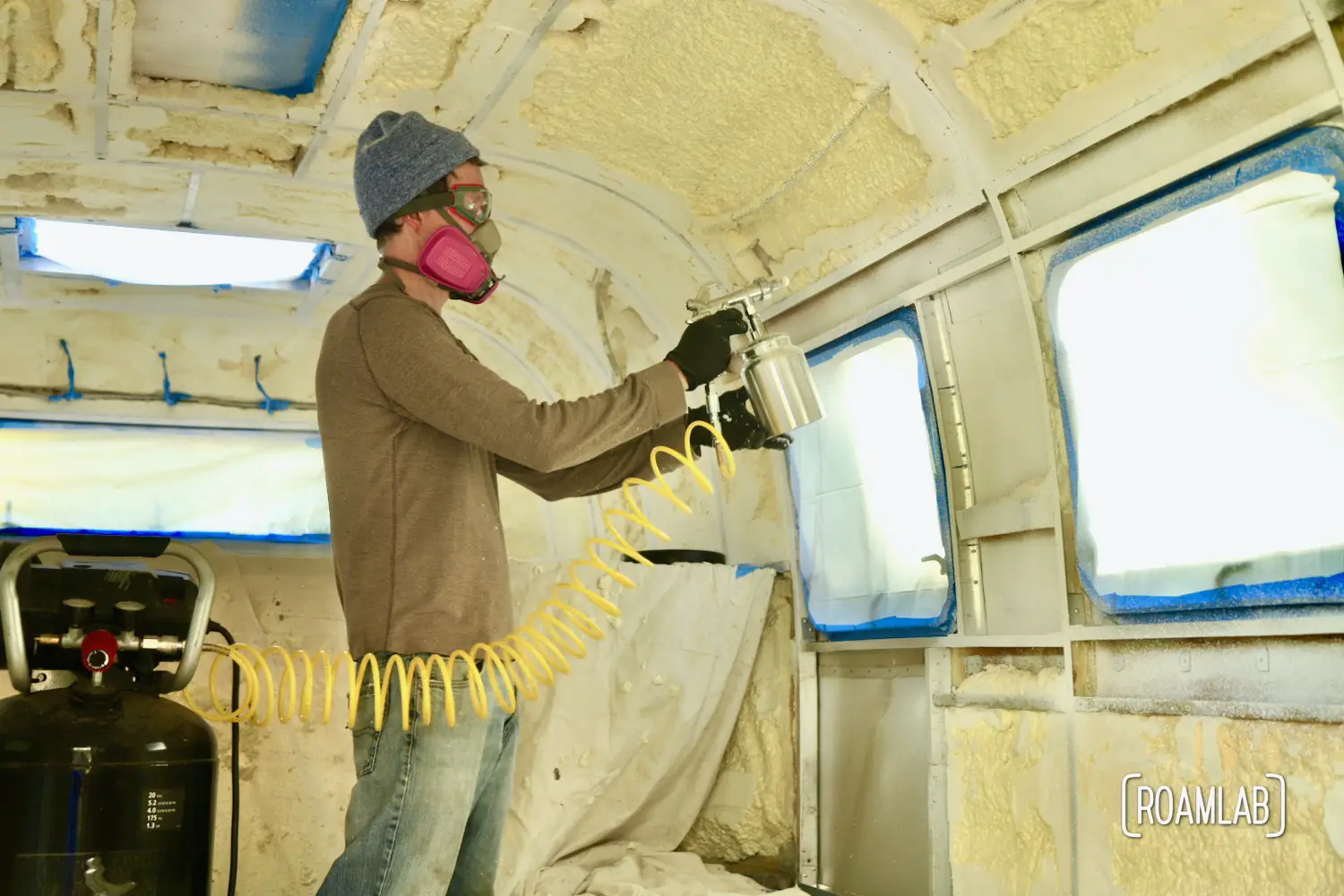

DonH
Thanks for your in depth and well presented comparison. I appreciate not only all the detail but also the reasoning involved.